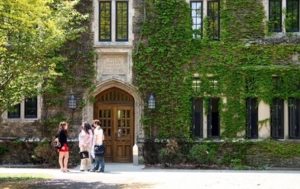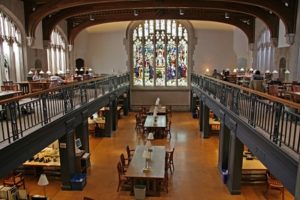Vassar College and Bard College represent some of the best of what private liberal arts education has to offer in the United States today. Bard College enrolls roughly 2000 students in upstate New York.
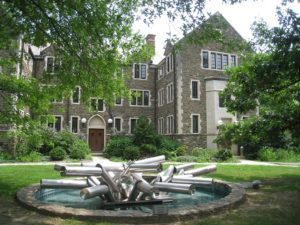
Photo: Bard College
Vassar College, also in New York state, enrolls a similar number of students, yet boasts a striking student to faculty ratio of only 8 to 1. Vassar hosts only 47 part time faculty or administrators. The price of this close knit community rings up at over $60,000 per year (at both schools), for those not receiving some type of financial aid.
We wanted to compare these two schools because they offer such a wonderful opportunity to perspective students. To do this we took the time to actually survey the students enrolled there. Our questions covered everything from campus life to work load. The results of our survey follow and will hopefully provide a more clear picture of what each school has to offer perspective candidates.
Academics
To begin with, neither school has an easily manageable work load: Not one student in our survey at either school described the workload as “easy,” and only ten percent of students surveyed, at both schools, found the workload “very manageable.” The majority of Bard students describe their workload as “reasonable,” while 50 percent of Vassar students surveyed found the workload “difficult” and “time consuming.” This difference in the perception of the workload seems to be the only clear difference between the two schools in terms of academics. As we will see, students at both schools clearly evidence a desire to achieve academically.
A Bard Senior says: “The professors are extraordinary, and every student is inspirational.”

Photo: Vassar College
Another Bard senior says, “[Bard has an] Artistic and supportive environment with highly rigorous academics.”
Among Vassar College students there was a similar feeling: “It’s hard to describe how much happier I am when I’m surrounded by intellectual equals. It encourages me to be inquisitive, strive to learn and understand a variety of subjects, and learn enough to have informed opinions about the world.”
These comments support our findings concerning the amount of time students spend studying: 55 percent of students at both schools spend more than 3 hours studying each day. At both schools, 10 percent of students spend more than 4 hours hitting the books each day. What we found was that the difference in actual workload was negligible, while the perception of the difficulty in the work load mentioned above remains. In terms of the “academic environment,” once again, students at both schools are in agreement about what they experience on a day to day basis. 70 percent of students at both schools agreed that there is a collaborative or highly collaborative environment. There were students at both schools who found the environment competitive, but they were a minority and of equivalent numbers for both schools.
Faculty
Going hand in hand with the academic environment is the relationship that students have with their professors, and we looked at the relationship students had with both academic and support staff. The non-teaching, or support staff, was looked upon favorably by a clear majority of students at both schools.
When queried about the relationship students had with their professors outside of class, or how often they talked about academics outside the class room, Bard College students were more likely to have these kinds of conversations more often. 65 percent responded that they were likely to discuss academics outside the classroom on a weekly basis. Students at Vassar were overall less likely to have these conversations.
Neither were Vassar students as satisfied by the academic guidance they received, but a Vassar College junior pointed out that “There are very few academic requirements, and this allows you to really pursue your interests. The professors are also very accessible and happy to help students.”
A Bard freshman said, “I love the academics here, the professors are wonderful, and the administrative staff are absolutely reliable. The students, however…can be socially awkward and it can sometimes feel very lonely on campus. It’s a good atmosphere, but socialization takes effort.”
Socializing is indeed a very important aspect of the education any student will receive. In our survey, we broke this down into “campus life” questions and “social scene” questions for students to consider.
Campus Life
Most, if not all, students will be living in campus housing at both colleges, and most will be satisfied. The statistics showed that the students were satisfied with the housing arrangements at both colleges; however, when it comes to a “sense of community,” there was a difference.
Vassar students seem to have a stronger community identity, with no students responding that their community was “weak,” and close to 20 percent saying the sense of community was “very strong.”
A Vassar sophomore said, “The inclusive student body and interest in getting to know one another regardless of background or upbringing.” This sense of community will serve Vassar students well because, as we will see, they seem to have very little interaction with the local community. The sense of community for Bard was rated “average” by 50 percent of the students.
Bard College’s relationship with the surrounding community is better than Vassar’s, but not by much, with close to 50 percent of those surveyed responding that the school’s relationship with the local community was only “somewhat close.” Campus life will be important to both schools, so let’s examine the social scene more closely.
Social Scene
Vassar’s strong sense of community is highlighted by the fact that 80 percent of social life is centered almost exclusively around “on campus events.” The balance between on and off campus activities seems to be more equitable at Bard College with 35 percent claiming there is an equivalent balance between on and off campus activities. When it comes to attendance at on campus activities, both schools have a good turnout.
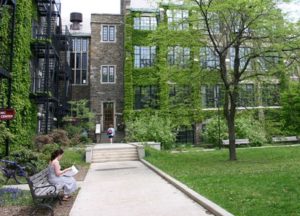
Photo: Bard College
One question perspective college students (and parents) should be asking themselves, when it comes to social life on a college campus, is “How important the influence of alcohol is to student activities?” It is worth noting that both schools seem to have a healthy respect for the influence of alcohol. That being said, however, 80 percent of Vassar students agreed that they are more likely to include alcohol in their socializing and that alcohol is “somewhat important” on campus social life. Just over 50 percent of Bard students said that alcohol was “somewhat important,” and a part of most activities, but a large percentage, just under 50 percent, also felt that is was “somewhat unimportant.”
Conclusion
When asked “Overall, how satisfied are you with your college experience?” the results were similarly positive for both colleges. However, a common complaint among Bard students was that they would like “a more culturally diverse campus.” Vassar students concurred with that observation; they wanted “more open conversations about how to approach race outside of the classroom.”
Finally, we asked “Would you recommend this school to other students?” Vassar students emphatically recommend their school to others, with an 85 percent affirmative response to this question. On the other hand, Bard students are somewhat more modest, comparatively, with a 70 percent response in the affirmative here.
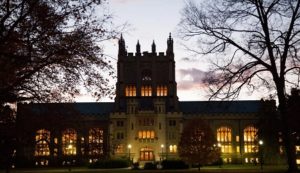
Photo: Vassar College
A Bard College student summarized the conclusion we can draw from our questions this way: “What I enjoy most about Bard is the community’s sense of acceptance for all sorts of people and the readiness to help anyone in need regarding academic and social matters.”
This was indeed true of both schools, but our survey was successful in identifying some of the important differences!
